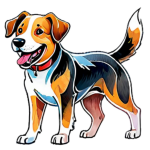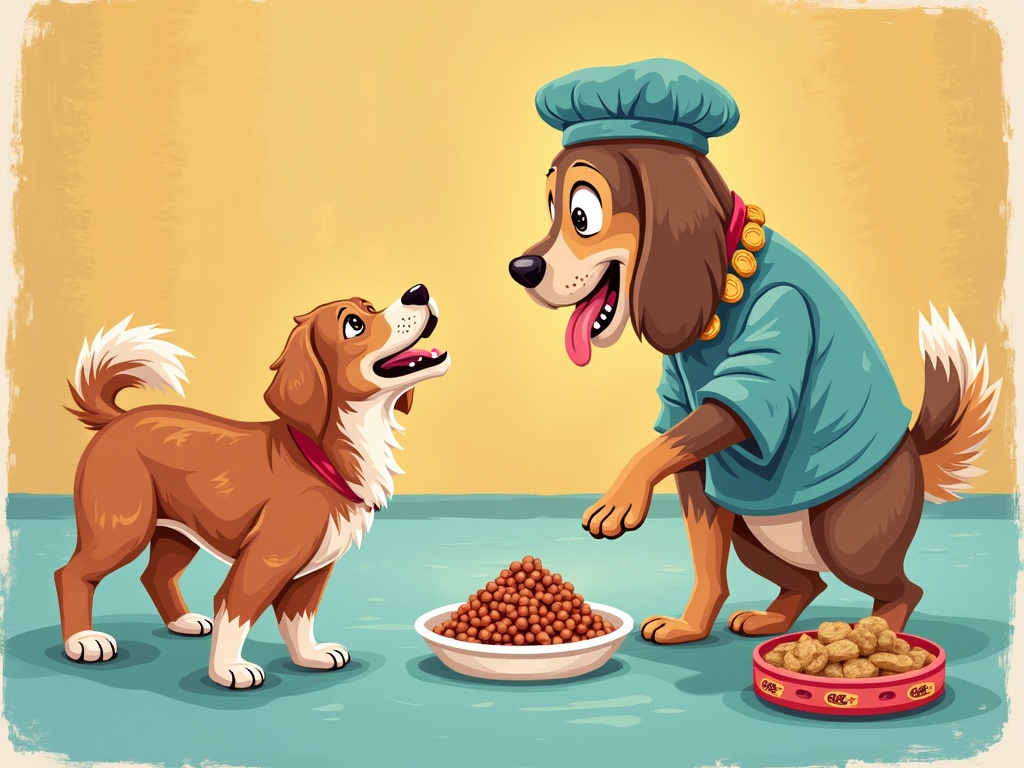How to Fade a Food Lure in Dog Training: A Step-by-Step Guide
Imagine your dog, a whirlwind of furry enthusiasm, flawlessly executing a sit-stay on command. Now picture achieving this not through coercion or force, but through positive reinforcement, and the strategic use – and eventual removal – of food lures. The journey from a kibble-guided puppy to a reliably obedient companion involves a delicate dance: the art of fading the food lure. Master this, and you unlock a world of willing cooperation with your canine friend.
Understanding the Power of Food Lures
Food lures are a cornerstone of positive reinforcement training. They're small, delectable treats used to guide your dog into a desired position or behavior. Think of it as gently coaxing them into understanding what you want, using their natural motivation – their love of food!
Why Food Lures Work
**Motivation:Food is a powerful motivator for most dogs. It captures their attention and makes them eager to participate.
**Clarity:Lures clearly communicate what you expect. The dog follows the treat, associating the action with the reward.
**Positive Association:By pairing the desired behavior with a positive experience (receiving a treat), you create a positive association, making the dog more likely to repeat the behavior.
When to Use Food Lures
Food lures are most effective during the initial stages of teaching a new behavior. They help the dog understand the desired action quickly and efficiently. Common examples include:
Teaching sit, down, and stay.
Luring a dog into a crate.
Guiding a dog through an agility course.
Introducing a dog to new equipment, like a grooming table.
The Art of Fading: Weaning Your Dog Off the Lure
While food lures are incredibly useful, they are meant to be a temporary tool. Relying on them indefinitely can lead to a dog who only performs when a treat is visible. This is where the art of fading comes in. Fading refers to the gradual process of reducing and eventually eliminating the lure, while maintaining the desired behavior.
Why Fading is Crucial
**Generalization:Fading helps the dog generalize the behavior. They learn to perform the action in different environments and situations, not just when a treat is present.
**Reliability:A faded behavior becomes more reliable. The dog learns to respond to the verbal cue or hand signal, not just the sight of food.
**Intrinsic Motivation:Fading encourages intrinsic motivation. The dog begins to perform the behavior because they enjoy it and because they have learned that it pleases you, not just because they expect a treat.
Step-by-Step Guide to Fading a Food Lure
Here's a breakdown of how to successfully fade a food lure, using sit as our example behavior.
Step 1: Mastering the Lure
**Hold the Lure:Hold a treat near your dog's nose.
**Guide into Position:Slowly move the treat up and slightly back over their head. This will naturally cause most dogs to sit.
**Verbal Cue:As their rear touches the ground, say Sit.
**Reward:Immediately give them the treat and praise them enthusiastically.
**Repeat:Practice this several times in a row, until your dog consistently sits when you move the lure.
Step 2: The Empty Hand
**The Motion:Perform the same hand motion as before, but this time, keep your hand empty. Pretend you have a treat in your hand.
**Verbal Cue:Say Sit as you make the motion.
**Reward (Delayed):If your dog sits, immediately reach for a treat in your treat pouch or container and reward them.
**Consistency:Repeat this several times. The key is to make the hand motion identical to when you had a treat in your hand.
Step 3: Intermittent Reinforcement
This is where the magic happens! Intermittent reinforcement means that you don't reward every single successful sit. This keeps the dog guessing and maintains their motivation.
**Vary the Rewards:Sometimes reward the sit, and sometimes just offer enthusiastic praise.
**Randomness:There's no set pattern for when to reward. The unpredictability is key.
**Example:You cue Sit. Dog sits. You say Good dog! and give them a scratch behind the ears (no treat). Next time you cue Sit, and they sit, you give them a treat and praise.
Step 4: Verbal Cue Only
**Verbal First:Now, try giving the verbal cue Sit without any hand motion at all.
**Wait:Give your dog a few seconds to respond.
**Reward:If they sit, reward generously with praise and a treat.
**If They Don’t Sit:Go back to using the empty hand motion for a few repetitions, then try the verbal cue again.
Step 5: Generalization and Variable Reinforcement
Now it's time to test the Sit in different environments and with distractions.
**New Locations:Practice Sit in your backyard, at the park, and on walks.
**Distractions:Gradually introduce distractions, such as other people, dogs, or noises.
**Variable Rewards:Continue to use variable reinforcement, rewarding some sits with treats, some with praise, and some with a favorite toy.
Troubleshooting Common Fading Challenges
Fading isn't always a smooth process. Here are some common challenges and how to overcome them.
Challenge: Dog Only Responds When They See the Treat Pouch
**Solution:Vary where you keep the treats. Sometimes have them in your pocket, sometimes in a treat pouch, sometimes hidden nearby. The goal is to break the association between the treat pouch and the behavior.
Challenge: Dog Stops Performing the Behavior Altogether
**Solution:You may have faded too quickly. Go back a step in the process and reinforce the behavior more frequently for a while, then gradually resume fading. Also, make sure your rewards are valuable enough to the dog. A boring kibble might not cut it! Up the ante with a high-value treat like a small piece of cheese or cooked chicken.
Challenge: Dog Gets Frustrated and Gives Up
**Solution:Keep training sessions short and fun. End on a positive note, and don't push your dog beyond their limits. If they're getting frustrated, take a break and try again later. Consider clicker training. Clicker training can help make the reward marker more clear and consistent, helping your dog understand exactly what behavior is being rewarded.
Tips for Successful Fading
**Patience is Key:Fading takes time and consistency. Don't get discouraged if your dog doesn't learn overnight.
**Positive Reinforcement:Always use positive reinforcement methods. Avoid punishment or scolding, as this can damage your relationship with your dog.
**High-Value Rewards:Use high-value treats that your dog finds irresistible, especially during the initial stages of training.
**Consistency:Be consistent with your cues and commands. Use the same verbal cues and hand signals every time.
**End on a Positive Note:Always end training sessions on a positive note, with a behavior that your dog knows well.
Beyond Food: Other Types of Reinforcement
While food is a powerful motivator, it's not the only form of reinforcement. As you progress in your training, you can start to incorporate other types of rewards, such as:
**Praise:Enthusiastic verbal praise can be very rewarding for many dogs.
**Toys:A quick game of fetch or tug-of-war can be a great reward.
**Affection:A scratch behind the ears or a cuddle can be a rewarding experience for some dogs.
**Activities:Access to a favorite activity, such as going for a walk or playing with other dogs, can also be used as a reward.
By understanding the principles of fading and using a variety of reinforcement methods, you can transform your dog from a lure-dependent learner into a confident, well-behaved companion eager to please. Embrace the journey, celebrate the small victories, and enjoy the incredible bond you build with your furry friend along the way.


